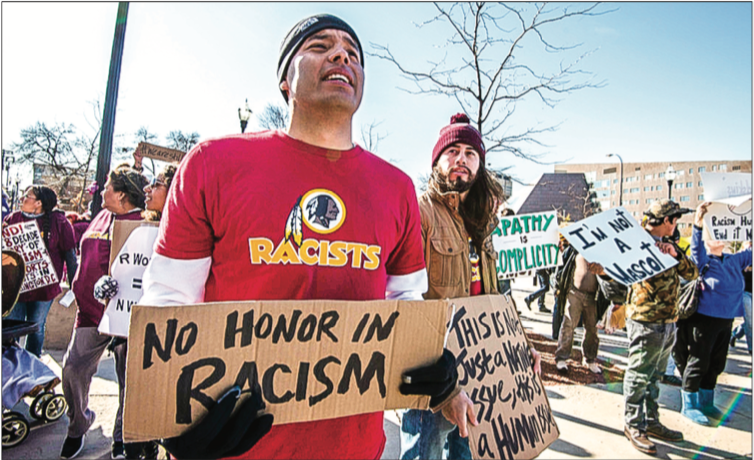Politically correct sports

Cleveland Indians come under pressure from MLB to change team name

RACISM — More sports teams have shed Native American names and mascots while holdouts face increasing pressure to follow suit.
Google Image
Society’s vernacular is constantly changing.
What one word means today may mean something completely different decades later.
The term redskin and the pictures depicting Native Americans found in many sports teams today are meant to be a tribute to America’s first people, not an insult.
The image of a courageous warrior with war-paint and braids makes them an easy choice for sports team mascots.
However, not everyone agrees that the logos portray Native Americans in a positive light.
MLB commissioner Rob Manfred hopes that the Cleveland Indians baseball team will move away from using its Chief Wahoo logo, which shows a red-faced Native American brave wearing a headdress.
“We certainly understand the sensitivities of the logo, those who find it insensitive and also those fans who have a longstanding attachment to its place in the history of the team,” Bob DiBiasio, the Cleveland Indians vice president for public affairs, said.
This is not a new issue.
In 2013, the Washington Redskins were the center of controversy concerning their depiction of a Native American brave on their logo. There was an outcry from many Native American groups, claiming it was racially insensitive.
According to the Washington Post, the origin of the word redskin came from the Native Americans themselves.
During the late 1700s, the term redskin started to be used by Native Americans as a way to refer to themselves in English. They also used the terms white-skins and black-skins to indicate various ethnicities.
It was not until the last few decades of the 1800s that the term started to be used in a derogatory way.
In 1863, the Minnesota Winona Daily Republican published an ad that offered a reward for every “red-skin sent to Purgatory.”
After this time, it was used as a pejorative by Caucasian Americans in reference to Native Americans.
Yet it did not stop sports teams, like the Cleveland Indians, Atlanta Braves and Washington Redskins from using logos and names that had the possibility of being viewed in a negative way.
In order to fully understand the issue and find a solution, the team owners should listen to the ethnic group the logos are depicting.
Florida State University is a prime example of this collaboration as they work with the Seminole tribe in order to use their mascot to honor the tribe’s heritage.
The school has collaborated with the tribe in the authentic representation of the mascot at football games and the elimination of disrespectful school traditions.
Despite Florida State’s success, National Congress of American Indians (NCAI) president Brian Cladoosby claims that depictions of Native Americans as team mascots does not paint them in a good light.
“The invisibility of Native peoples and lack of positive images of Native cultures may not register as a problem for many Americans, but it poses a significant challenge for Native youth who want to maintain a foundation in their culture and language,” Cladoosby said.
“The Washington team’s brand — a name derived from historical terms for hunting native peoples — is a central component to this challenge.”
Yet this does not match popular opinion.
A Washington Post poll from May 2016 showed that only five percent of Native Americans were upset with depictions of Indians in sports teams.
A word can have many connotations and meanings.
Although the word redskin has negative connotations attached with its meaning, it is not currently being used in a harmful way. As a mascot of a sports team, Chief Wahoo and other Native American braves are symbols of courage and a warrior spirit.
Changing a team’s logo like the Cleveland Indians could be possible in the future.
But I do not believe it is necessary because a majority of Native Americans do not
view it as offensive.
jones is an opinion writer.

Most others have spoken of similar topics, but I absolutely see your point.
My mother was a Chickasaw Indian and had beautiful, red/brown skin. She thought it was beautiful too and wondered why that’s considered derogatory.